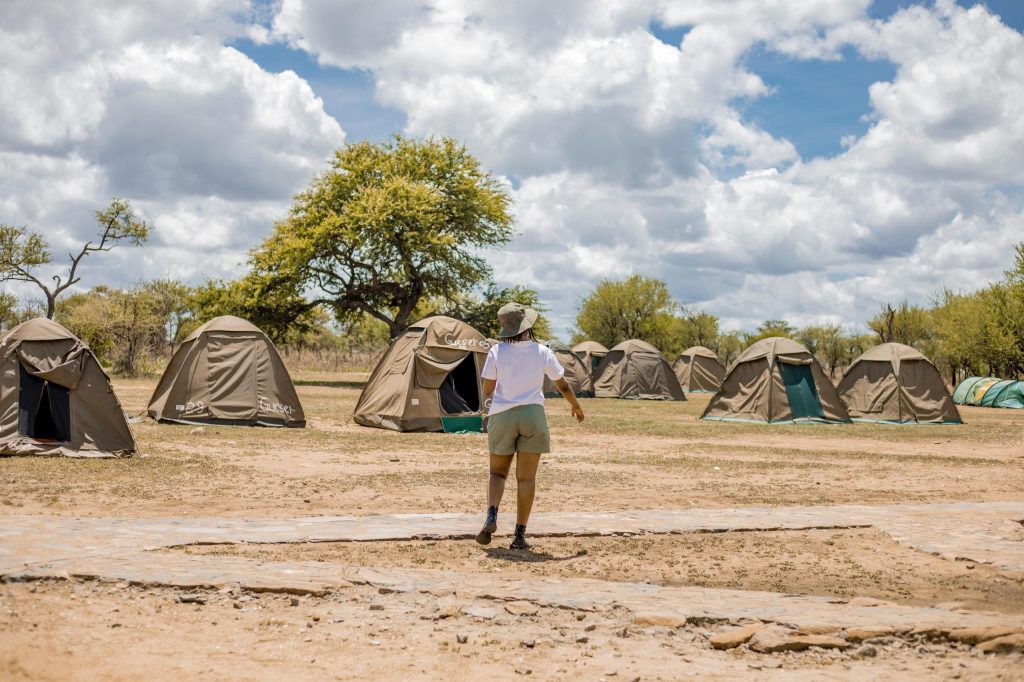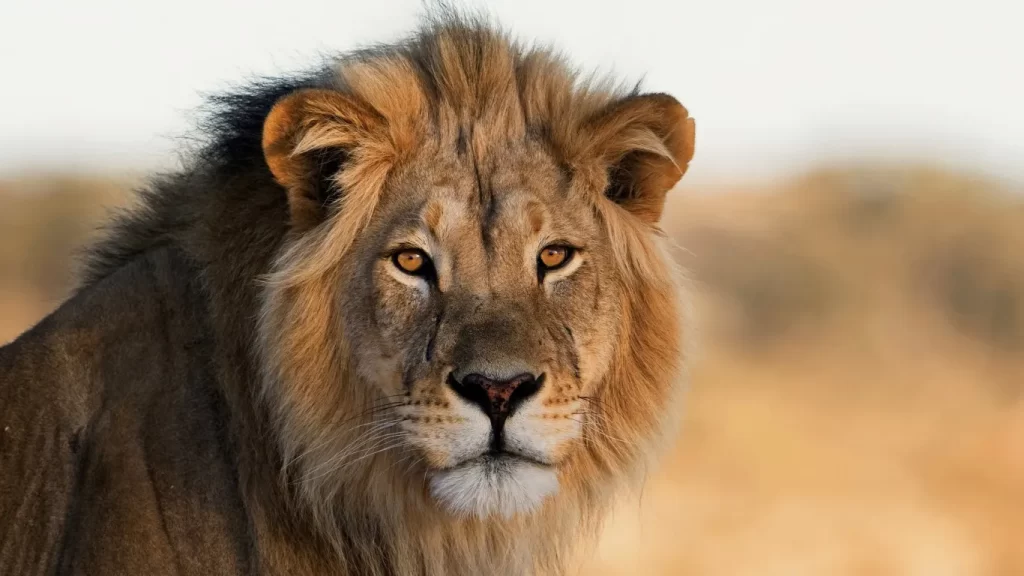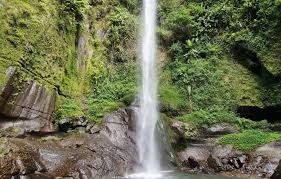1. Appropriate Clothing for Safari
Clothing is one of the most important aspects to consider when packing for a safari. You’ll encounter various climates and need to protect yourself from the sun, insects, and the elements, so it’s crucial to pack the right attire.
-
Lightweight and Breathable Fabrics: Choose lightweight, breathable clothing that will keep you cool and dry in the African heat. Fabrics like cotton, linen, or moisture-wicking synthetic materials are ideal because they allow sweat to evaporate and provide comfort during long days in the bush.
-
Neutral, Earth-toned Clothing: It’s best to wear neutral colors like khaki, beige, olive, or light brown. This helps you blend in with the environment, and it also reduces the chances of attracting insects, particularly tsetse flies, which are attracted to bright colors.
-
Long-Sleeved Shirts and Pants: While it may be hot during the day, long sleeves and pants offer essential protection from the sun, as well as from insect bites and scratches when walking through dense vegetation or tall grass. Choose lightweight fabrics that allow airflow while providing adequate coverage.
-
Layering Options: The weather can vary during the day, with mornings and evenings being cooler. Bring a light jacket, sweater, or fleece for the chilly mornings and evenings, and layers that can easily be removed as the day warms up.
-
Hat and Sunglasses: A wide-brimmed hat is essential for sun protection, especially during game drives when you’re exposed to direct sunlight. Sunglasses with UV protection will also help shield your eyes from the harsh sun and keep you comfortable during wildlife viewing.
2. Comfortable Footwear
A safari can involve a combination of game drives, bush walks, and sometimes even hikes, so having the right footwear is key to staying comfortable.
-
Hiking Boots or Sturdy Walking Shoes: For safaris that involve walking or treks, make sure to pack sturdy, comfortable hiking boots or shoes. Look for shoes that provide ankle support, a good grip, and are breathable. Waterproof boots are a good idea if you’ll be walking through wet or muddy areas.
-
Casual Shoes or Sandals: When you’re not out on game drives or hiking, a pair of comfortable sandals or lightweight shoes for relaxation back at the lodge or camp are ideal. These shoes will help you relax and unwind after a long day of adventure.
3. Sun Protection Essentials
The African sun can be intense, and it’s essential to protect your skin from the harmful effects of UV rays. Here’s what you should bring:
-
High-SPF Sunscreen: Pack a broad-spectrum sunscreen with a high SPF (at least 30 or higher). Apply it generously before you go outside and reapply every couple of hours, especially after sweating or swimming.
-
Lip Balm with SPF: Don’t forget to protect your lips from the sun’s rays. Choose a lip balm with SPF to keep your lips hydrated and shielded from sunburn.
-
After-Sun Lotion: After a long day under the sun, soothe and rehydrate your skin with an after-sun lotion or aloe vera gel. This will help reduce skin irritation and prevent sunburn.
4. Binoculars and Camera Equipment
A safari is a photographer’s dream, and you’ll want to capture all the incredible wildlife moments. Binoculars are also essential for spotting animals from a distance, so here’s what you should pack:
-
Binoculars: A good pair of binoculars (8×40 or 10×42 magnification is ideal) will help you spot wildlife that may be far away. This is especially important for birdwatching or viewing animals in dense foliage.
-
Camera and Accessories: A quality camera is essential for capturing your safari moments. Bring a DSLR or a mirrorless camera with a good zoom lens (200mm or more) to get close-up shots of wildlife. Don’t forget extra batteries, memory cards, and lens cleaning cloths to ensure your camera is always ready to capture the next great shot.
-
Camera Bag: A padded camera bag or case will help protect your camera gear from dust, bumps, and other elements during game drives and walks.
5. Insect Repellent and Anti-Malarial Medication
Insects can be a nuisance on safari, and there’s also the potential risk of malaria, so it’s important to pack the right insect protection.
-
Insect Repellent: Pack a high-quality insect repellent with DEET (20% to 50%) or other effective ingredients like picaridin. Apply it to exposed skin before heading outdoors to protect against mosquitoes and other biting insects. Be sure to reapply throughout the day, particularly after sweating or swimming.
-
Anti-Malarial Medication: Depending on the region you’re visiting, your doctor may recommend anti-malarial medication before, during, and after your trip. Always follow the prescribed dosage and take the medication as directed.
6. Health and First Aid Kit
While it’s unlikely that you’ll encounter serious medical issues on safari, it’s always wise to have a basic first aid kit on hand. Here’s what you should pack:
-
Pain Relievers: Pack common over-the-counter pain medications such as ibuprofen, acetaminophen, or aspirin for headaches, muscle pain, or minor injuries.
-
Band-Aids and Antiseptic Cream: For any small cuts or scrapes, bring along Band-Aids, antiseptic wipes, and an antibiotic ointment to prevent infection.
-
Anti-Diarrheal Medication: In case you experience stomach issues, it’s a good idea to have anti-diarrheal medication (like Imodium) on hand.
-
Prescription Medication: If you take any prescription medication, be sure to bring enough for the entire trip, along with a copy of the prescription in case of emergencies.
7. Reusable Water Bottle
Staying hydrated during your safari is essential, especially in hot climates. A reusable water bottle will allow you to stay refreshed throughout the day.
- Hydration Pack or Water Bottle: Bring a durable, insulated water bottle to keep your water cold or hot for several hours. Many safari lodges offer refill stations, so you can easily refill your bottle between game drives.
8. Small Backpack or Daypack
A small, lightweight daypack is perfect for carrying your personal items during game drives and excursions.
- Daypack Features: Choose a pack that is durable, secure, and comfortable to carry. It should fit your camera, sunscreen, insect repellent, and water bottle. A pack with multiple compartments will help you stay organized and make it easier to access your items when needed.
9. Power Bank and Adapter
Access to electricity can be limited in remote safari locations, so it’s crucial to bring along a portable power bank to keep your devices charged.
-
Power Bank: Invest in a high-capacity power bank that can charge your phone, camera, or other electronics multiple times before needing to be recharged.
-
Travel Adapter: Depending on where you’re traveling, you may need an adapter to charge your devices. Check the specific outlet requirements for your destination before packing.
10. Travel Documents and Currency
Finally, make sure you have all necessary documents to ensure a smooth trip:
-
Passport and Visa: Check the visa requirements for your safari destination and ensure that your passport is valid for at least six months after your planned return date.
-
Travel Insurance: It’s highly recommended to have travel insurance that covers medical emergencies, trip cancellations, and lost luggage.
-
Local Currency and Credit Cards: While many safari lodges and camps accept credit cards, it’s wise to carry some local currency for tipping or purchases in remote areas.
By carefully packing these essential items, you’ll ensure that your safari adventure is comfortable, safe, and enjoyable. With the right preparation, you can focus on what matters most—experiencing the beauty and wonder of Africa’s wildlife and landscapes!







